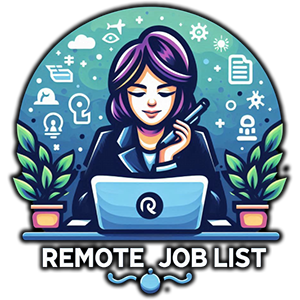How to Quit a Remote Job?
Stepping away from a remote job can feel like navigating uncharted waters. Without the face-to-face interactions we’re used to in traditional office settings, quitting a remote position presents unique challenges. But don’t worry – I’m here to guide you through this journey, ensuring you leave your remote job with professionalism and poise. In this comprehensive guide, we’ll explore how to quit a remote job while maintaining your relationships and reputation.
Quick Answer: How to Quit a Remote Job
To quit a remote job professionally: 1) Confirm your decision, 2) Plan your exit, 3) Draft a resignation letter, 4) Schedule a video call with your manager, 5) Send a formal resignation email, 6) Inform colleagues, 7) Manage the transition, and 8) Maintain connections after leaving.
My Personal Remote Job Resignation Story
Before we dive in, let me share a quick story. A few years ago, I found myself in your shoes, figuring out how to quit a remote job I’d held for three years. I was nervous about breaking the news over a video call, worried I’d fumble my words or that the message wouldn’t come across as intended. But by following the steps I’m about to share with you, I managed to leave on great terms. My boss even became a valuable reference for future job applications!
1. Make Sure You’re Ready to Quit
Before you take the leap, it’s crucial to be 100% sure about your decision to quit your remote job. Ask yourself:
- Why do I want to leave?
- Have I tried addressing my concerns with my current employer?
- Am I financially prepared for this transition?
- Do I have another job lined up, or a solid plan for what’s next?
Take time to mull over these questions. Chat with trusted friends or family members to gain outside perspective. Remember, quitting a job is a big step, so you want to be certain it’s the right move for you.
Find out more: Are Remote Travel Agent Jobs Legit?
2. Review Your Contract and Company Policies
Before you start planning how to quit your remote job, dust off that employment contract and give it a thorough read. Pay special attention to:
- Notice period: How much advance notice are you required to give?
- Non-compete clauses: Are there any restrictions on where you can work next?
- Confidentiality agreements: What information are you obligated to keep private?
- Remote work equipment: Do you need to return any company-provided gear?
Understanding these details will help you navigate the resignation process smoothly and avoid any potential legal hiccups.
3. Plan Your Exit Strategy
Now that you’re sure about quitting and know your contractual obligations, it’s time to plan your exit. Here’s how to quit a remote job strategically:
- Choose your last day: Pick a date that gives you enough time to wrap up projects and hand over responsibilities.
- Prepare a transition plan: List your ongoing tasks and projects, and think about who could take them over.
- Gather important information: Collect any personal files or contact info you’ll need after leaving.
- Plan your finances: Make sure you’re financially ready for the gap between jobs, if there is one.
Having a solid plan in place will make the process of quitting your remote job feel less daunting and more manageable.
4. Draft Your Resignation Letter
Even in the digital age, a formal resignation letter is still a must when you’re figuring out how to quit a remote job. Here’s a simple template to get you started:
Dear [Manager's Name], I am writing to formally notify you of my resignation from my position as [Your Job Title] at [Company Name]. My last day of work will be [Date], two weeks from today. I want to express my gratitude for the opportunities for professional and personal development that you have provided me during the last [time in your role]. I have enjoyed working for [Company Name] and appreciate the support provided me during my tenure with the company. If I can be of any help during this transition, please let me know. Sincerely, [Your Name]
Keep it short, sweet, and professional. No need to go into detail about why you’re leaving or where you’re going next.
5. Schedule a Video Call with Your Manager
When it comes to how to quit a remote job, nothing beats a face-to-face conversation – even if it’s virtual. Schedule a video call with your manager to break the news. Here’s how to handle it:
- Be direct: Start the conversation by clearly stating your intention to resign.
- Express gratitude: Thank your manager for the opportunities you’ve had.
- Offer to help with the transition: Show you’re committed to leaving things in good order.
- Be prepared for questions: Your manager might ask why you’re leaving or where you’re going next. It’s up to you how much you want to share.
Remember, this conversation sets the tone for your departure, so aim to keep it positive and professional.
Find out more: Capital One Remote Jobs
6. Follow Up with a Formal Email
After your video call, it’s time to make it official. Send a formal resignation email, attaching your resignation letter. This creates a paper trail and confirms the details of your departure. Keep the email brief and professional:
Dear [Manager’s Name],
As discussed in our video call today, please accept this email as formal notification of my resignation from [Company Name]. My last day of work will be [Date], as stated in the attached resignation letter.
Thank you again for your support during my time here. I’m committed to ensuring a smooth transition and will do my best to wrap up my duties before my departure.
Best regards,
[Your Name]
This email serves as the official record of your resignation, so make sure all the details are correct.
7. Inform Your Colleagues
Once your manager is in the know, it’s time to let your coworkers know you’re leaving. In a remote setting, this might be through a team video call or a group chat message. Keep it upbeat and express your appreciation for working with them. You might say something like:
Hey team,
I wanted to let you all know that I’ve decided to move on to a new opportunity, and my last day at [Company Name] will be [Date]. I’ve really enjoyed working with all of you and I’m grateful for the experiences we’ve shared. I’d love to stay in touch, so please feel free to connect with me on LinkedIn. Thanks for everything!
Best,
[Your Name]
Remember, these are people you might cross paths with again in your career, so leave on a positive note.
8. Manage the Transition Period
Now comes the crucial part of how to quit a remote job: managing your last few weeks. Your goal is to leave your role in the best possible state for your successor. Here’s how:
- Document your processes: Write down step-by-step guides for your regular tasks.
- Finish up projects: Try to complete any ongoing work, or at least get it to a good stopping point.
- Train your replacement: If possible, offer to help train the person taking over your role.
- Organize your files: Make sure all your work is clearly labeled and easy to find.
By doing a thorough handover, you’re not only helping your team but also leaving a lasting positive impression.
9. Prepare for the Exit Interview
Many companies conduct exit interviews when employees leave. If you’re asked to participate in one, here are some tips:
- Be honest but tactful: Share constructive feedback, but avoid being overly negative.
- Focus on your experience: Talk about what you learned and how you grew in the role.
- Offer suggestions: If you have ideas for improving the remote work experience, share them.
- Express gratitude: End on a positive note by thanking the company for the opportunity.
Remember, the goal of an exit interview is to help the company improve, not to air all your grievances.
10. Say Your Goodbyes and Stay Connected
As your last day approaches, take time to say individual goodbyes to colleagues you’ve worked closely with. In a remote setting, this might mean scheduling quick video chats or sending personalized messages. Don’t forget to:
- Exchange personal contact information with people you want to stay in touch with
- Update your LinkedIn profile and connect with coworkers there
- If appropriate, let clients or external contacts know you’re leaving and who will be taking over your responsibilities
Maintaining these professional relationships can be valuable for your future career moves.
How to Quit a Remote Job with Grace
Quitting a remote job doesn’t have to be a stress-inducing experience. By following these steps, you can navigate the process with professionalism and confidence. Remember, the key to how to quit a remote job successfully is clear communication, thorough preparation, and a positive attitude.
As you embark on this new chapter in your career, take pride in handling your departure with grace and integrity. Your professional manner in quitting your remote job will leave a lasting positive impression, potentially opening doors for future opportunities.
Have you had experience quitting a remote job? What worked well for you? Share your thoughts in the comments below – your insights could help others navigate this tricky process!










